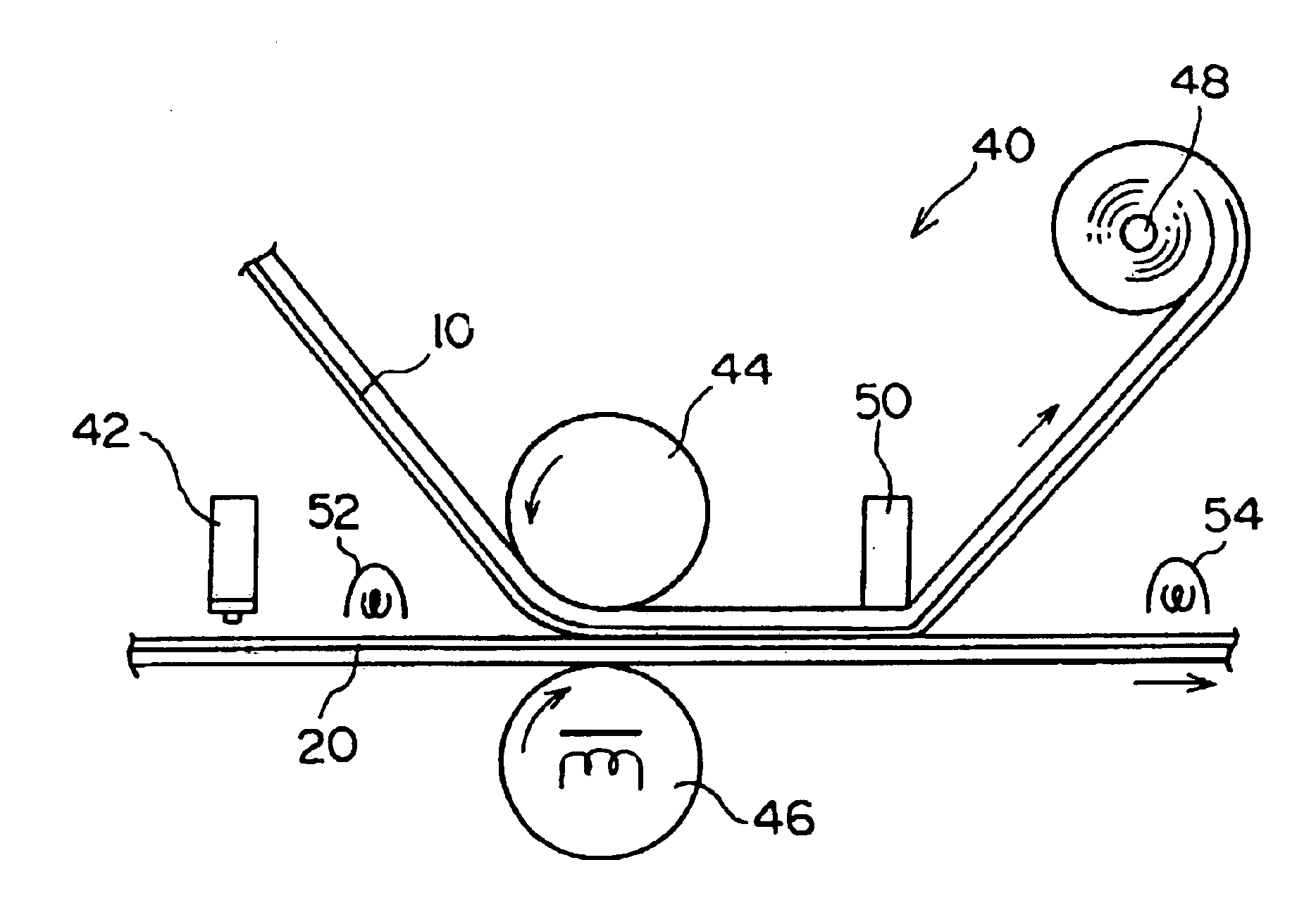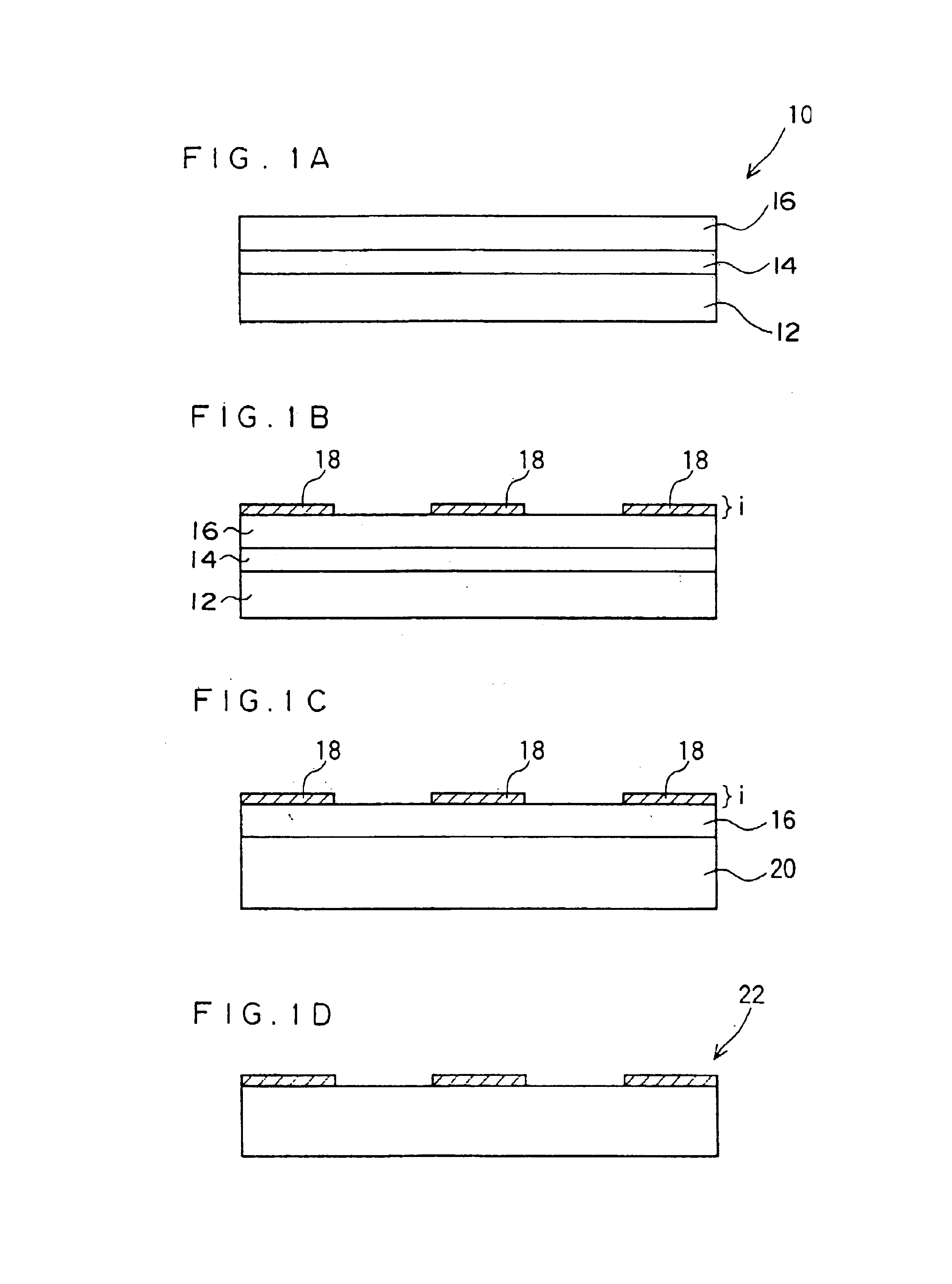Method for producing a ceramic body decorated with an inorganic pigment
a technology of inorganic pigments and ceramic bodies, which is applied in the direction of superimposed coating process, liquid/solution decomposition chemical coating, instruments, etc., can solve the problems of insufficient light resistance and heat resistance of the image region, remarkably complicated operation, and repeated preparation of the film, etc., to achieve low cost, reduce sedimentation of inorganic pigments, and process simple
- Summary
- Abstract
- Description
- Claims
- Application Information
AI Technical Summary
Benefits of technology
Problems solved by technology
Method used
Image
Examples
example 1
[Preparation of hot melt ink]carnauba wax (manufactured by Noda Wax Co.,40 parts by massLtd.)fatty acid triglyceride (“K-3 WAX”; manufactured by25 parts by massKawaken Fine Chemical Co., Ltd.)hydrocarbon resin (“Arkon P-100”; manufactured by10 parts by massArakawa Chemical Industries Co., Ltd.)cyan inorganic pigment for ceramic (product number:25 parts by mass121522; manufactured by Mitsui Mining Co., Ltd.)
A mixture having the above-described composition was heated, kneaded, and dispersed by using an attritor (MAOISIC type; manufactured by Mitsui Mining Co., Ltd.) at 130° C. for 16 hours, and thereafter, subjected to heat and pressure filtration. The obtained product was cooled at a room temperature while being kept still to thereby prepare a hot melt ink C containing the above-described cyan inorganic pigment.
[Preparation of Image Donating Sheet]
An overcoat lacquer (“Plus size LO-170”; Goo Chemical Co., Ltd.) having methacrylate resin as a main component was applied and dried on a ...
examples 2 to 4
Painted ceramics 102 to 104 each having a monochrome image were obtained in the same manner as in Example 1 except that in place of the cyan inorganic pigment for ceramic which was used for preparing the hot melt ink C, magenta inorganic pigment for ceramic (product number: 77571; manufactured by Cerdec Corporation), yellow pigment for ceramic (product number: 13651; manufactured by Cerdec Corporation), and black inorganic pigment for ceramic (product number: 14209; manufactured by Cerdec Corporation) were used to prepare hot melt inks M, Y, and K respectively.
Each of images of the painted ceramics 102 to 104 had excellent image quality, and excellent water resistance and light resistance.
example 5
A color photographic image photographed by a digital camera was color-separated using a personal computer into cyan, magenta, yellow, and black, and a full-color ink image was formed on the image donating sheet A by using the hot melt ink C, M, Y, and K prepared by Examples 1 to 4 and also using the ink jet printer used in Examples 1 to 4. Subsequently, the image donating sheet A with the full-color image formed thereon was immersed in water and a paper substrate was peeled and removed to thereby obtain a film having a full-color image formed on the front side thereof. The obtained film was disposed in such a manner that a rear side (a surface on which no image is formed) thereof faces a white tile, and was then adhered to the white tile. After drying, the white tile was calcined at about 850° C. and a painted ceramic plate 105 having a full-color image was obtained.
The full-color image of the painted ceramic plate 105 had excellent image quality and excellent water resistance and l...
PUM
| Property | Measurement | Unit |
|---|---|---|
| softening point | aaaaa | aaaaa |
| viscosity | aaaaa | aaaaa |
| surface tension | aaaaa | aaaaa |
Abstract
Description
Claims
Application Information
 Login to View More
Login to View More - R&D
- Intellectual Property
- Life Sciences
- Materials
- Tech Scout
- Unparalleled Data Quality
- Higher Quality Content
- 60% Fewer Hallucinations
Browse by: Latest US Patents, China's latest patents, Technical Efficacy Thesaurus, Application Domain, Technology Topic, Popular Technical Reports.
© 2025 PatSnap. All rights reserved.Legal|Privacy policy|Modern Slavery Act Transparency Statement|Sitemap|About US| Contact US: help@patsnap.com



